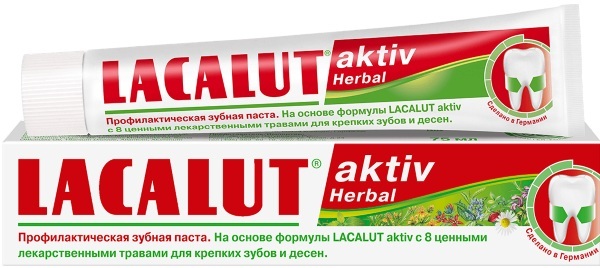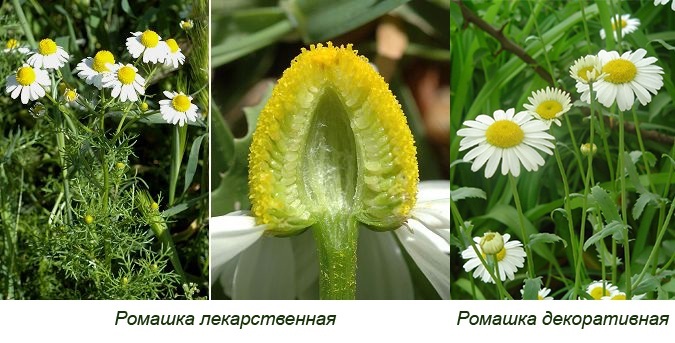Cannabis is the English name for a medicinal cannabis variety. From Latin, the name Cannabis is translated as "useful".
The plant really since ancient times it has been used for food and for the treatment of various diseases: from coughing to severe chronic pain. Doctors in many countries who study cannabis (marijuana) argue that the harm from the use of drugs depends entirely on moderation and adherence to doses.
Record content:
-
1 Peculiarities
- 1.1 Botanical description
- 1.2 Description of the bushes
-
1.3 Description of colors
- 1.3.1 Hemp seed
- 1.4 What parts are used for medicinal purposes
- 1.5 Collection
- 1.6 How to prepare
- 1.7 Compound
-
2 Medicinal and useful properties
- 2.1 For women
- 2.2 For men
- 2.3 For children
- 3 Potential harm
- 4 Contraindications
-
5 Traditional medicine recipes
- 5.1 Seed emulsion
- 5.2 Infusion of leaves and shoots
- 5.3 Decoction of leaves
- 5.4 Tincture from the green part
- 5.5 Broth in milk
- 5.6 Hemp oil
- 6 Marijuana videos
Peculiarities
Cannabis or marijuana is traditionally called a plant from the Hemp family, which has a psychotropic effect, as well as many medicinal properties. Hemp is most often referred to as an agricultural crop, more in demand in cooking and the production of natural fibers.
Polymorphic species - Sowing hemp (Cannabis sativa L), is capable of strongly changing properties depending on the place of growth. Modern botanists classify all known varieties of marijuana as one species, although the balance of active ingredients is never repeated. At the same time, the accumulation of active substances in any species is maximal in the south, but decreases in a cool climate.
Botanical description
Cannabis, whose benefits and harms are of interest to the medical community, was once a common sowing crop, providing Russia with a huge income from the export of technical fibers (hemp). Hemp, along with flax, was grown on vast territories from the time of Peter I to the 60s of the 20th century.
Hemp is a herbaceous plant that is originally dioecious and is cultivated as an annual crop. Today there are many varieties with different combinations of active ingredients, dioecious and bisexual varieties.
Description of the bushes
The root system of the annual is pivotal, deeply penetrating. In female marijuana plants, it is more potent and branched.
Male cannabis bushes develop quickly, have a strong stem, and reach a height of 2 m. Female cannabis plants are less vigorous and develop with a slight delay. They have the popular name "mothers". Male specimens are called "poskonia", they are considered less valuable, usually they are removed from the fields by hand.
The cannabis stem is erect, hollow inside, prone to strong branching. At the base, it has a rounded cross-section, becomes hexagonal to the middle and tetrahedral to the tips of the increments.
Petiolate, simple leaves are located opposite, to the tops of the trunks - alternately. The plates are dissected or divided into 5–7 segments. The edges of the plates are serrated. At the base of the bush and at the top, the leaves are whole or have no more than three lobes.
Description of colors
Cannabis blooms in June - early July. The female flower is a folded pistil surrounded by a greenish, rudimentary bracts. Inconspicuous buds are collected in a complex, large inflorescence-spike at the top of the shoot.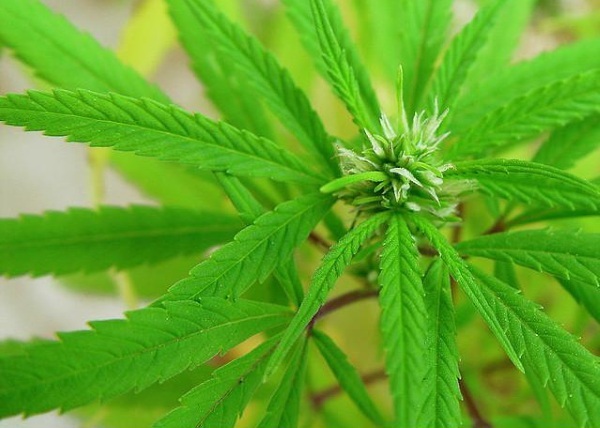
Male flowers are distinguished by prominent stamens with large anthers and a whitish-green bracts. Panicle inflorescences are located in leaf axils on lateral shoots, close to the central stem.
A distinctive feature of monoecious cannabis varieties is the ability to plant male flowers first. Then, higher up the stem, bisexual inflorescences are formed. At the tops of such plants, female-type flowers are formed.
Hemp seed
Cannabis fruits are triangular or spherical small nuts. Hemp seed is grayish-green or brown in color, enclosed in bracts (modified bracts), which do not crumble after flowering. Achenes ripen by the end of summer.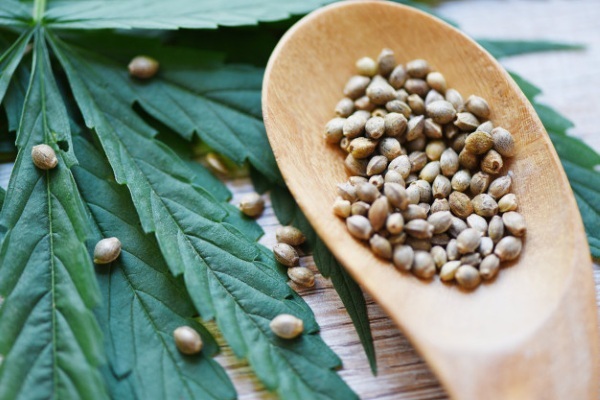
The plant is prone to rapid feralization and self-seeding reproduction. Wild hemp species are common in the south, in central Russia, the Volga region, western Siberia, and Altai. Private cultivation of cannabis in Russia is prohibited. Industrial planting is subject to strict legal restrictions.
What parts are used for medicinal purposes
Chemical compounds that have medicinal and intoxicating effects are found mostly in the gummy resin of female cannabis flowers. The rest of the plant also has beneficial properties.
Valuable parts of the cannabis plant useful for treatment:
- Hemp seeds. They are eaten, trying not to expose the raw materials to heating. Most often, an emulsion is prepared by rubbing the fruit.
- Hemp oil. Obtained from seeds by cold pressing. Used externally and internally. The oil is a valuable food product and has some medicinal properties.
- Shoots and leaves. Apply fresh and dried. One of the therapeutic uses is the preparation of smoking mixtures. This cannabis is called medical marijuana.
- Extracts are extracted from the green part, by laboratory methods, individual substances are isolated from them and used for various diseases as prescription drugs.
Cannabis, the benefits and harms of the green part of which are highly dependent on the cultivar, is absolutely safe in the form of seeds. We can even apply oil cake - waste from the production of hemp oil. It contains large amounts of phytin. This complex phosphorus compound is extremely useful for bones, helps with diathesis, neurasthenia, anemia.
Collection
For the cultivation and procurement of cannabis in Russia, like most countries, a special license is required. Only state organizations and special enterprises can legally cultivate and study medical marijuana.
The varieties with the content of psychotropic substances tending to zero are grown by farms, supporters of natural tissues and adherents of a healthy diet. In this case, seeds are used for traditional medicine after complete ripening.
As a weed, hemp can be found near the shores of fresh water bodies, in valley meadows, along forest ravines, along roads. In cultivated fields, wild varieties parasitize in plantings of buckwheat, rye, oats, millet, and sometimes potatoes.
How to prepare
For medicinal purposes, the most valuable are the inflorescences of female hemp plants - the so-called "cones". The content of valuable resins depends on the place of growth. In weed varieties of cannabis and plants grown with a lack of solar radiation, the concentration of psychotropic compounds is minimal.
The tops of the harvested plants are dried at a temperature not exceeding 50 ° C using dryers. It is believed that valuable substances are best preserved when harvesting in dark, cool rooms.
Store the green parts of the plant (inflorescences, leaves) in bags or boxes. Raw materials should be protected from dampness and sunlight. The shelf life of harvested cannabis does not exceed 2 years.
Cannabis seeds are consumed for up to 5 years, but it is much more difficult to preserve them for such a long time:
- insufficiently dried raw materials overheat and deteriorate;
- increased air humidity promotes germination;
- fluctuations in temperature awaken the seeds.
Therefore, it is recommended to store them in an airtight container, away from light at a temperature of about 8 ° C. The bottom shelf of the refrigerator is ideal for this. For storage until the next harvest, it is enough to pour the hemp seeds into a glass container with a hermetically screwed lid.
Compound
Cannabis: the benefits and harms of which in medicine are determined by the same substances, contains more than 400 valuable compounds. 60 of them were originally found in cannabis, and some are not found anywhere else. Such substances are called "cannabinoids".
The most important indicators of the safety and quality of raw materials are the following compounds:
| Tetrahydrocannabinol | THC | It causes changes in consciousness, is responsible for the occurrence of psychological dependence, causes most of the side effects, while it is considered an excellent antiemetic agent |
| Cannabidiol | KDB | Has no psychoactive effect, exhibits sedative, anti-inflammatory, antispasmodic, analgesic, hypnotic properties in the body |
| Cannabinol | KBN | Powerful analgesic, helps prevent heart attacks, vascular crises, reduces intraocular as well as blood pressure |
| Cannabichromen | KBH | Provides pain relief comparable to opioids, but only in the presence of THC |
| Cannabigerol | KBG | Sedative, hypnotic |
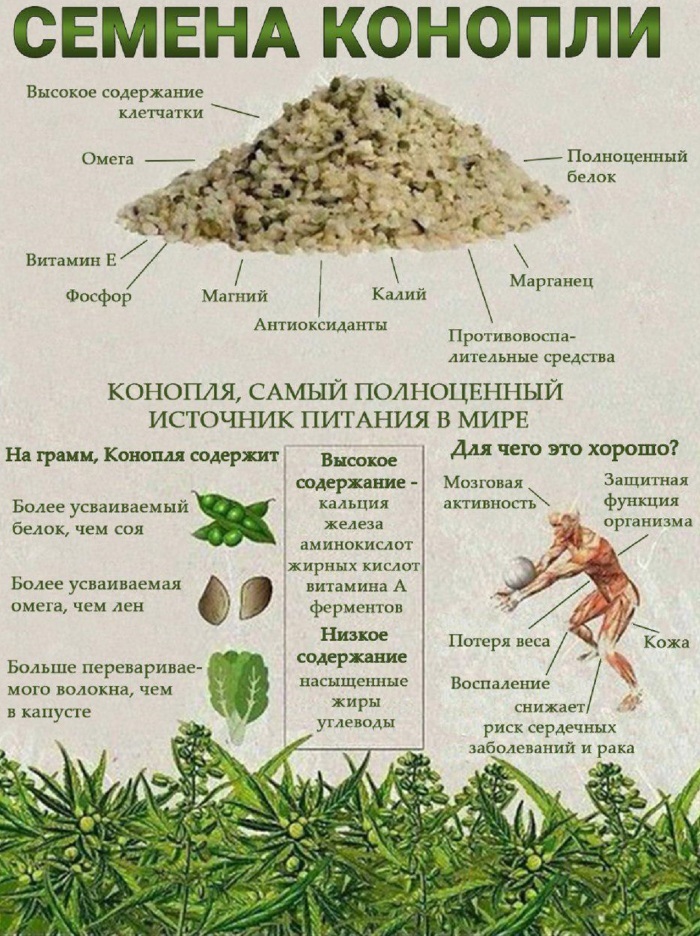
CBD-dominant varieties, which have little effect on consciousness, but have a pronounced therapeutic effect, are especially prized in medicine. Cannabinoids are mainly accumulated in the leaves and buds of cannabis. The seeds and oil contain trace amounts of these substances, but boast a rich composition.
Valuable substances in the composition of cannabis:
| Seeds | Oil |
|
|
Only high-quality, properly dried seeds and cold-pressed oil are suitable for medical purposes. Heating changes the composition, some of the valuable fats are oxidized, and some useful substances are completely decomposed.
Medicinal and useful properties
The green part of cannabis has multiple effects on the body, providing anti-inflammatory, emollient, hypnotic, and analgesic effects. Hemp cannabis juice is a mild laxative. Some components exhibit antibiotic and fungicidal effects.
Smoking marijuana, due to its psychotropic effects, is not a priority in the medicinal use of the herb today. Scientists are constantly improving methods of making extracts from plants that do not contain THC, but have a high percentage of CBD.
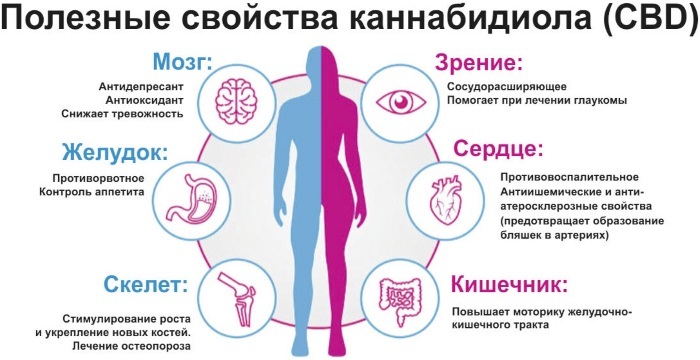
It is the latter compound that is being closely studied by modern science to fight cancer, epilepsy, circulatory disorders, the extinction of brain functions, and multiple sclerosis. But the priority in using cannabis is to combat chronic pain as well as spasms of any origin.
Other medical uses for marijuana include:
- reduction of convulsive syndrome;
- neuroses, insomnia, anxiety;
- relief of symptoms in Parkinson's disease;
- reduction of pain in rheumatic diseases, arthritis;
- treatment of edema, kidney disease, cystitis;
- relief of cough, asthma attacks.
Marijuana can relieve nausea and vomiting even in severe conditions during radiation or chemotherapy. This allows you to regain appetite, restore weight to cancer patients and patients with HIV. At the same time, cannabinoids have a mild laxative effect, relieve irritable bowel syndrome, and alleviate the course of Crohn's disease.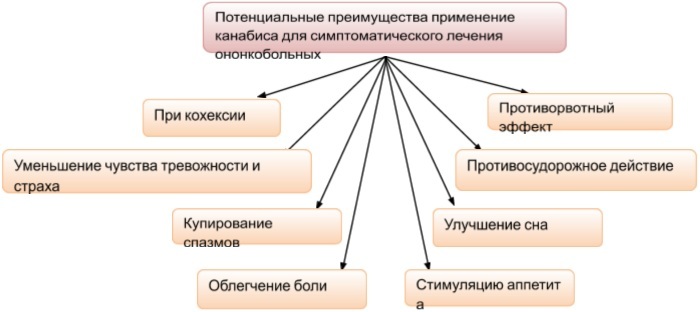
Cannabis seeds and the oil extracted from them increase immunity, regulate cholesterol metabolism, and sugar levels. Against the background of regular intake, the condition of blood vessels and heart improves, atherosclerosis, thrombosis, varicose veins are prevented.
For women
Smoking marijuana has been successfully used to treat chronic pain in endometriosis, interstitial cystitis, and fibromyalgia. However, the THC in leaves and flowers interferes with normal gestation. The substance is believed to be responsible for the increased incidence of miscarriages and ectopic pregnancies.
Fetal cannabis syndrome in newborns is more common than alcoholic cannabis. If the mother used any form of marijuana with a narcotic effect during gestation, the child is most often born with insufficient weight, hypoxia, and somatic disorders.
Hemp oil and seeds are good for women of all ages:
- help to get rid of excess weight;
- enhance lactation in nursing mothers;
- contribute to the strength of nails, beauty of hair, maintain skin elasticity.
Hemp oil is widely used in cosmetology, treatment of boils, rashes, and when applied to the skin, it prevents stretch marks.
For men
Cannabis, the benefits and harms of which for the male body are also controversial, is considered a remedy for impotence. The green part contains substances that stimulate libido, relieve tightness and stress, and is a natural antidepressant.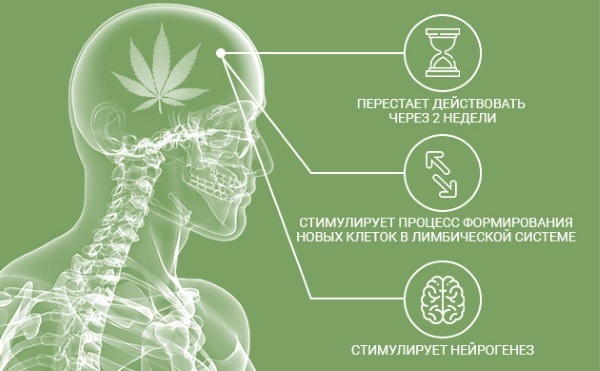
At the same time, regular use of the herb negatively affects sperm quality and also gradually decreases testosterone production. This threatens with male infertility and the extinction of the functions of the testicles.
On the other hand, oil and hempseed are safe means of maintaining men's health. These natural products are the prevention of impotence and diseases of the genital area.
The use of cannabis oil has no side effects. Its balanced composition helps to maintain vascular health, prevents the development of atherosclerosis, improves the condition of cardiovascular diseases, to which men are more prone.
Hemp seeds and oil are considered excellent tonic. They are recommended for admission to athletes, mental workers, adolescents in the period of active growth. For men, cannabis is indicated for problems with digestion, bowel function, ulcers, cholecystitis, gastritis.
For children
For medicinal purposes, to relieve epileptic seizures, special types of cannabis are used that do not contain toxic cannabinoids. So a specially bred variety "Charlotte's Web" is legally used in the United States to relieve severe symptoms.
Any use of THC cannabis for children is prohibited. Seeds and oil in nutrition or therapy are allowed to be used from 6 months of age.
Recommended doses of hemp seed oil for children:
- as a source of valuable elements and to prevent age-related colic - no more than 6 drops from six months of age;
- from 1 year, the dosage is increased to 1 tsp. l .;
- at 10 years old, the permissible amount of oil per day is 1 tbsp. l.
Cannabis seeds for children are used to increase hemoglobin, improve digestion, and soften coughs.
Potential harm
The side effects of marijuana containing cannabinoids are mainly related to altered consciousness.
Reception of the green part or smoking mixtures can be accompanied by the following phenomena:
- loss of orientation;
- nausea, dizziness;
- increased susceptibility to sounds and smells;
- pain, cramps in the stomach;
- decreased memory;
- unsteadiness of gait.
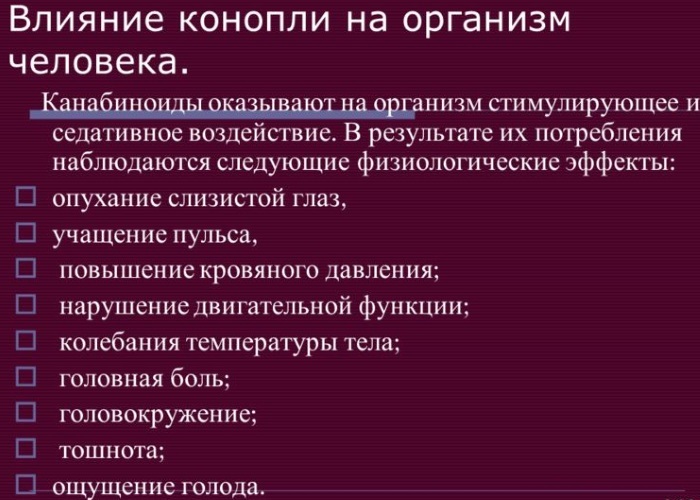 If the recommended doses of medical marijuana are exceeded, panic attacks, depersonalization, and delusional states are observed. People with an unstable psyche may develop psychosis. Cannabinoids, when used for a long time, cause psychological dependence.
If the recommended doses of medical marijuana are exceeded, panic attacks, depersonalization, and delusional states are observed. People with an unstable psyche may develop psychosis. Cannabinoids, when used for a long time, cause psychological dependence.
Cannabis seeds and hemp oil do not have these effects on the body. Ingestion or external use is not harmful. Overdose cases have not been recorded. The body's response to excessive consumption of oil internally is comparable to that of other vegetable fats. Diarrhea is the most common reaction.
Contraindications
The use of natural forms of cannabis in the form of seeds, leaves or oil among the contraindications has the following conditions:
- individual plant intolerance;
- severe liver damage (for example, with hepatitis C);
- serious gastrointestinal diseases.
Contraindications include taking oil or seeds in an amount of more than 2 tbsp. l. per day. Such a restriction is relative - its one-time violation does not have serious consequences.
Connabinoid forms of drugs are used exclusively in consultation with the doctor. The use of medical forms of marijuana during pregnancy, in childhood and with existing mental disorders is strictly contraindicated.
It is strictly forbidden to combine such treatment with alcohol or drive a car.
Traditional medicine recipes
Cannabis seed is a home remedy for many diseases. Cannabis with a minimal amount of psychoactive compounds is used as a sedative, diuretic, and peristalsis-regulating agent. Traditional medicine has accumulated many recipes for the safe use of hemp raw materials.
Seed emulsion
This medicine can be used for adults, children, debilitated patients. In lactating women, hemp seed gruel increases milk production. Cooking consists in grinding the seeds and diluting them with water.
A convenient form of medicine is obtained by mixing hemp flour in a ratio of 1 to 10 with liquid. This cannabis solution relieves spasms, has a slight analgesic effect. The remedy weakens the intestines moderately.
The suspension is drunk at 100 ml no more than 3 times a day. Reception continues from 5 to 10 days to improve urine flow, with cystitis, kidney disease, bladder. Densely diluted hemp gruel is taken 1 tsp. l. three times a day.
Infusion of leaves and shoots
A water extract is prepared from the apical part of flowering shoots, which has a sedative and hypnotic effect.
Preparation:
- Measure 1 tbsp. l. dried raw materials.
- Pour 200 ml of boiling water over the grass.
- Insist under the lid for about 1 hour.
- Strain and pour into a separate bowl.
The infusion should be taken in 1 tbsp. l. no more than 3 times during the day and additionally before bedtime. This cannabis remedy is also used to relieve symptoms of epilepsy. The course of treatment is continued for no longer than 14 days.
Decoction of leaves
The tool is effective for infectious and inflammatory lesions of the organs of vision, and is also used for washing rashes, wounds, burns.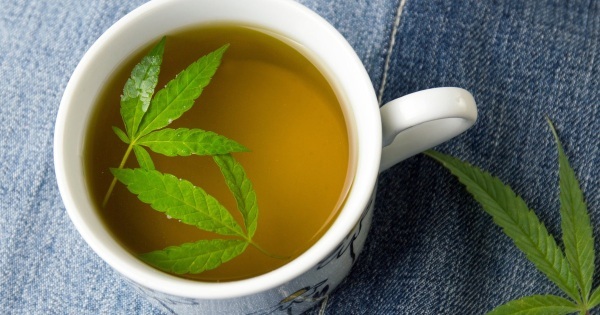
Preparation:
- Measure 2 tbsp. l. raw material from large hemp leaves.
- Pour the grass with 1 glass of water in a cooking utensil.
- Bring to a boil, set aside and cool.
The eyes are washed with the resulting solution, lotions are made. With herpes, it is advised to use the infusion inside, and wash the rashes with broth. Alcohol extract is considered more effective from viral manifestations.
Tincture from the green part
Cannabis, in the form of an alcohol extract, only shows its benefits when applied topically. The internal use of hemp tincture in any quantity can cause irreparable harm to health.
Preparation:
- The dried stems, with leaves and seeds, are crushed and then placed in a glass bottle.
- 1 liter of high-quality vodka or diluted alcohol is added to 100 g of raw materials.
- Insist in a dark place for at least 10 days.
- The infusion is filtered off.
Herpetic eruptions are lubricated with cannabis extract up to 4 times a day. The same infusion is diluted in half with water and buried in the ear canals for otitis media, ear pain, gargle with sore throat.
Broth in milk
Crushed seeds, warmed up with milk, can relieve asthma attacks, treat chronic coughs, and thin phlegm.
For the treatment of respiratory diseases, take 1 tsp. l. hemp seed, pour a glass of boiling water over it and slowly bring to a boil. This amount of medicine should be drunk in small sips a day.
To remove kidney stones, a decoction is prepared from 1 cup of cannabis seeds with 700 ml of milk. Cook the composition until evaporated threefold. The entire amount of the drug is calculated for a 5-day course of treatment. Cannabis decoction is taken several sips every morning before meals.
Hemp oil
Valuable squeeze from cannabis seeds is used to increase immunity, regulate metabolism, with atherosclerosis, cardiovascular disorders. The oil is an excellent vitamin and mineral supplement, prevents hypovitaminosis and anemia.
The adult dose of taking hemp oil is 1 tbsp. l. in a day. For prophylaxis, the medicine is used at bedtime, and for the treatment of gastrointestinal diseases and ulcerative lesions - in the morning, on an empty stomach. An effective course of treatment or prevention is at least 21 days.
Cannabis in the form of an oil or seed suspension is beneficial for skin conditions. Harm to the body when applied externally is completely excluded. Hemp oil helps to heal wounds, burns, pain relieves and disinfects damaged tissues, heals ulcers, boils. The valuable plant can even be used whole, kneading and making poultices for sore joints.
Marijuana videos
Malyshev about marijuana:

